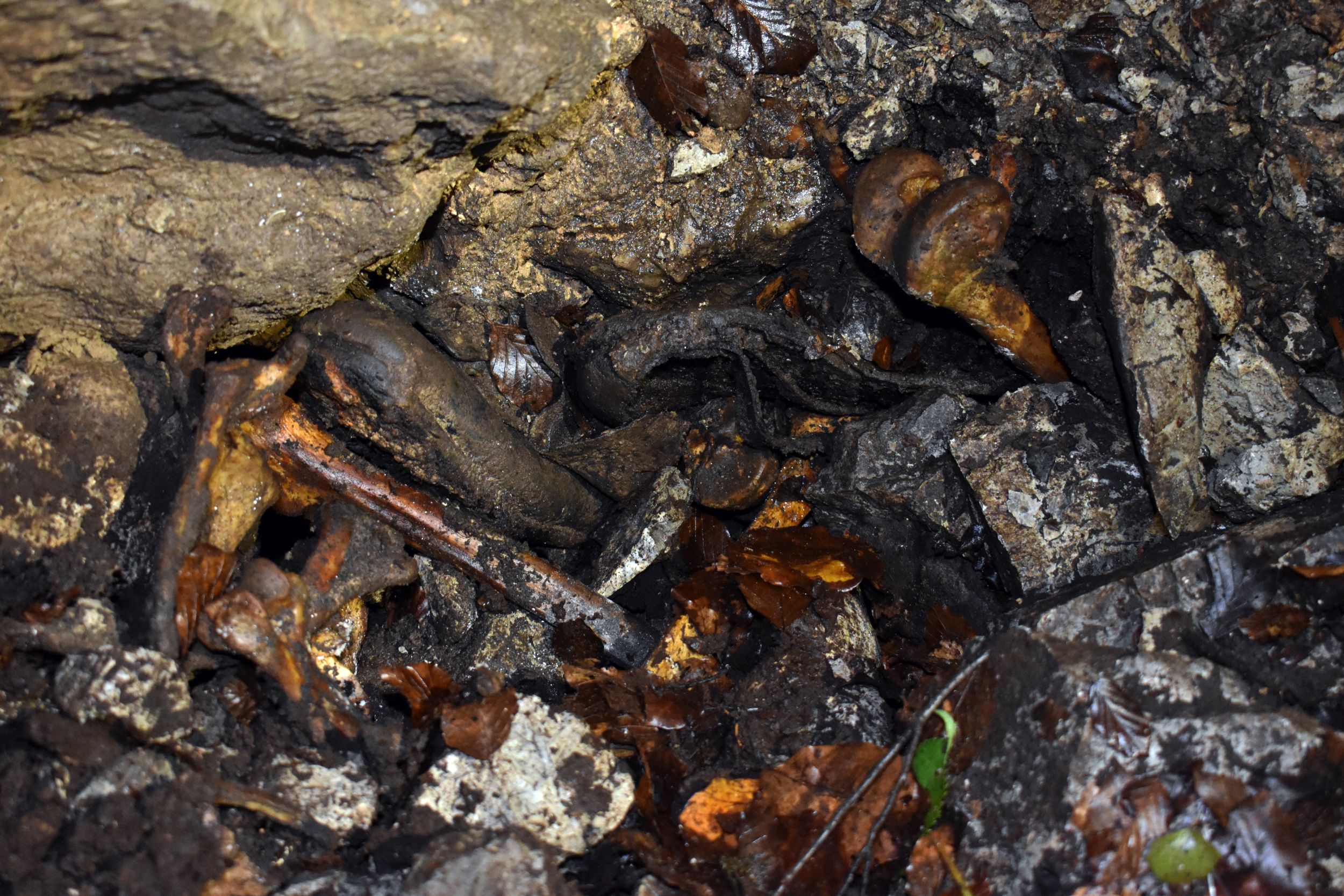A new killing ground was discovered in the area of Kočevski Rog. According to the representatives of the Government Commission for the Issue of Hidden Burial-grounds, the remains and personal objects of around 250 victims were found in the so-called abyss 3 (brezno 3). Most of the finds indicate that the victims were younger men, most likely civilians, who were killed in the autumn of 1945.
Abyss 3 is located in the area between Veliki Rog and Stare žage, in the immediate vicinity of the Stari log partisan hospital, where the cemetery for the partisans who died there is also located, archaeologist Uroš Košir revealed.
A 14-meter abyss was discovered
The President of the Caving club Novo mesto, Zdravko Bučar, described the process of the excavation of the remains and revealed that at the end of May, based on the deviation observed on one of the maps, an abyss was discovered, going as deep as 14 meters. Sanitary cleaning was carried out in early July. They descended into the abyss as many as 68 times and performed 91 lifts, which carried 137 loads. They needed three days to clean up everything, so today, according to Bučar, there are no more remains left there.
With the help of the cavers, the archaeologists first descended into the abyss on July 10th. They documented the situation and carried out a sanitary transfer of the remains that were visible on the surface, which was then followed by an even more detailed inspection. Given that a considerable amount of ammunition was discovered during the study, they concluded that the executions were carried out on the edge of the abyss. Judging by the data obtained during the analysis of the entry and exit wounds on the skulls, automatic weapons were used for the killings. According to STA, fragments of at least six hand grenades and a large number of unexploded ordnances were also found.
Most victims were in their early twenties
After the killings, the corpses were covered with rocks and gravel. Since the remains were also found on top of the gravel, it is assumed that some of the victims were thrown into the abyss after it had already been filled with rocks. “We assume that these were the prisoners who had to fill up the cave, and in the end, they ended up in it themselves,” he explained. The preliminary anthropological analysis showed that almost all of the victims were male. There was at least one woman among them, and probably no more than five. There were no children under the age of 15 among the victims, but quite a few were in their early twenties.
According to Košir, in addition to the remains, they also found spoons, combs, personal items, mirrors, rosaries, holy cards, and about 400 buttons, most of which belonged to the civilians. They also discovered bits of newspaper.
OZNA and KNOJ units took care of the executions
Pavel Jamnik, head of the police operation, pointed out that they had already received a tip about the burial ground in 2002, but based on the investigations at the time, they assumed it was about 500 meters away from the entrance. As part of a review of the inmates’ books regarding the local OZNA prisons, they obtained the information that in September of 1945, they had made a selection of who would be released, and who would be taken to the killing grounds. According to Jamnik, some of them were also taken to this abyss.
Jamnik also said that they managed to find a record of a conversation with a member of the 1st Battalion of KNOJ, who was responsible for providing transport. He described, in detail, how it all unfolded. The man drove the prisoners to the agreed-upon location, where the partisans were waiting to take them, and then they took them over. OZNA carried out the selection, and KNOJ assisted in transporting to the killing grounds.
Kočevski Rog has taken on completely new dimensions
According to Jože Dežman, chairman of the Commission, Kočevski Rog has taken on completely new dimensions. The objects that were found reveal that the victims in the newly discovered abyss are mainly Montenegrin and Serbian, and in Macesnova gorica, the killing ground of Slovenian prisoners of war is located. Dežman told Nova24TV that currently, the Republic of Slovenia does not treat war burial grounds and cemeteries in accordance with the international law, nor does it implement its laws.
“It is shocking that in the Slovenian registers of war cemeteries, the victorious side has less than 20,000 people buried, and there are more than 50,000 victims of this side. This means that we are actually talking about 20,000 lost family graves and the bad condition of Slovenian graves abroad. When it comes to the matter of the hidden cemeteries and killing grounds in particular, the problem is that Slovenia has not established regular relations with foreign countries. Especially with the republics of the former Yugoslavia. It is particularly worrying that since 2010, we no longer have a War Cemetery Service in the Republic of Slovenia. So, all of these tasks are still ahead of us. Even though we have lost many graves, we still have the opportunity to establish a virtual Slovenian cemetery with honest and verified data, within the inventory of the Institute of Contemporary History.”
Nina Žoher

